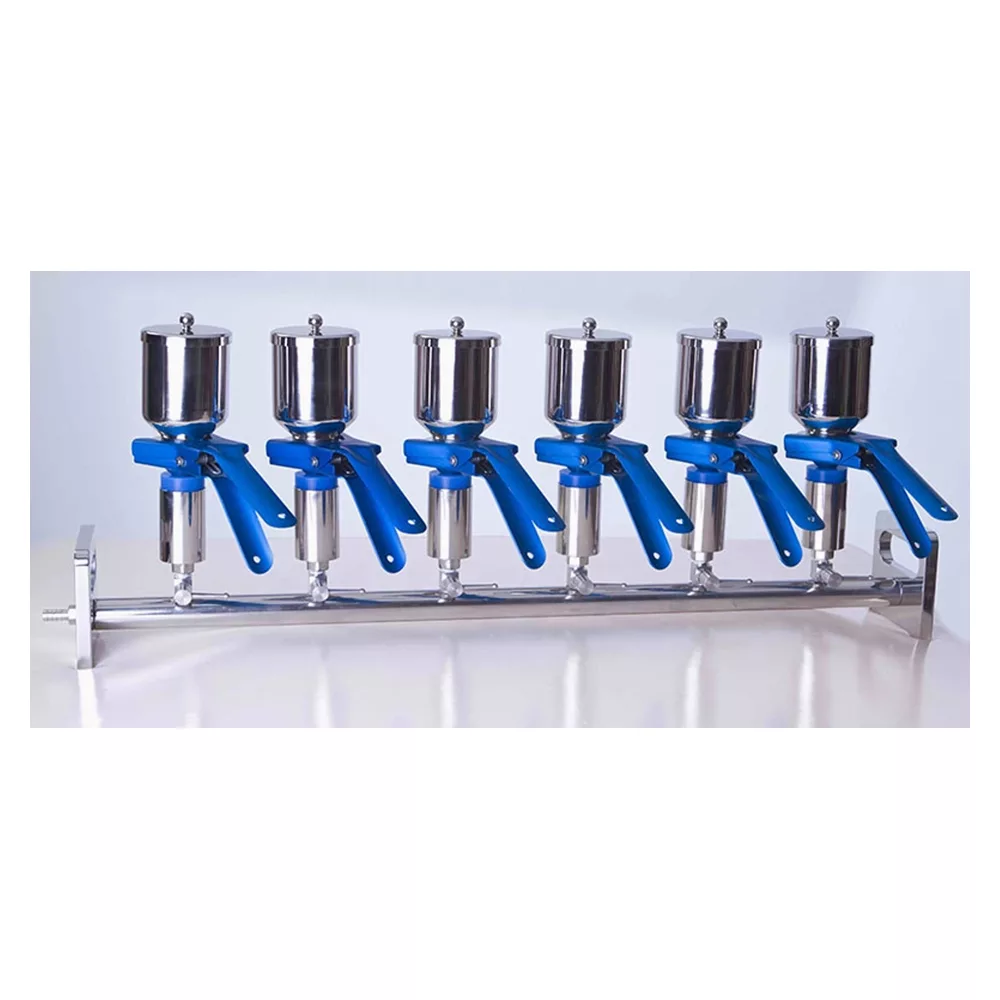Manifold Filtering System: The Ultimate Solution for Efficient Filtration in Laboratories
A Manifold Filtering System KMF/B/6 is an indispensable tool in any laboratory focused on increasing throughput, reducing contamination, and ensuring high-quality results in liquid filtration applications. Whether you’re working in a microbiology, pharmaceutical, environmental, or chemical analysis lab, a manifold filtration system streamlines operations and significantly enhances productivity. In this article, we’ll delve into what a manifold filtering system is, its benefits, applications, and how to select the right one for your laboratory needs.
What is a Manifold Filtering System?
A manifold filtering system allows for simultaneous filtration of multiple samples through a single vacuum source. This setup typically consists of a series of filter holders connected to a central manifold. Each filter holder can accommodate a separate sample, enabling parallel filtration. The filtered liquid is collected either in individual receptacles or through a single outlet for larger volumes, reducing handling time and ensuring consistency in sample processing.
Manifold filtration systems are particularly useful for high-throughput environments where time and accuracy are critical. Their ability to filter multiple samples at once, without cross-contamination, makes them a popular choice in labs focused on water testing, microbial analysis, and solvent filtration.
Key Features of a Manifold Filtering System
- Multi-Sample Filtration: With the ability to process several samples simultaneously, these systems drastically reduce the time spent on filtration compared to single-use devices. This makes them ideal for labs handling large sample volumes daily.
- Durable Construction: Most manifold systems are made from materials like stainless steel, aluminum, or chemically resistant plastics such as PTFE or polypropylene. This ensures the system withstands harsh chemicals and long-term use without compromising filtration quality.
- Customizable Options: Manifold filtering systems come in various configurations—ranging from 3-place to 6-place or even more—depending on your sample volume and throughput requirements. Some systems also allow for different filter sizes, making them versatile for a wide range of applications.
- Compatibility with Different Filters: Whether you’re using membrane filters for microbial contamination or glass fiber filters for suspended solids, manifold filtration systems are versatile, allowing the integration of different filter types and sizes.
- Ease of Use and Maintenance: These systems are designed for simplicity, enabling easy assembly, disassembly, and cleaning, which reduces downtime in the laboratory.
Applications of Manifold Filtering Systems
Manifold filtration systems are essential in a variety of laboratory applications. Below are some of the most common uses:
1. Microbiological Testing
In microbiology labs, the manifold system is used for testing water, beverages, and pharmaceuticals for microbial contamination. Membrane filtration, the preferred method for this application, allows the isolation of microbial colonies on the surface of the filter, making it easier to count and identify microorganisms.
2. Environmental Analysis
For water and soil testing, manifold filtering systems provide an efficient means of analyzing suspended solids, bacteria, and particulate matter. Environmental laboratories can benefit from the quick processing of multiple samples to comply with regulatory standards for water quality and environmental safety.
3. Pharmaceutical Industry
Pharmaceutical labs use manifold filtering systems to ensure product safety and efficacy through sterility testing. These systems help in filtering samples like growth media, water for injection, and other liquid components, reducing the risk of contamination during the production process.
4. Chemical Analysis
In chemical laboratories, manifold filtering systems are essential for solvent filtration, clarification of samples, and preparation for further analysis. Their ability to filter multiple solvents simultaneously improves operational efficiency and minimizes solvent waste.
Benefits of Using a Manifold Filtering System
1. Increased Throughput
The most obvious advantage of a manifold system is the ability to filter multiple samples simultaneously. This greatly reduces the time spent on filtration and allows labs to process more samples in less time without sacrificing quality.
2. Improved Accuracy and Consistency
Manifold filtration systems are designed to provide uniform pressure across all samples, ensuring consistent filtration results. This eliminates variations that can arise from individual, manual filtrations and guarantees repeatable results.
3. Cost Efficiency
By processing several samples at once, a manifold filtration system reduces the cost of labor and disposable filtration materials. Labs can cut down on the amount of equipment needed and save on filter membranes, vacuum tubing, and vacuum pumps by consolidating into one efficient system.
4. Reduced Risk of Cross-Contamination
With the proper setup, manifold systems minimize the risk of cross-contamination between samples, an essential feature when testing sensitive samples in microbiology, pharmaceuticals, or environmental applications. Many systems are designed with features such as individual valves or quick-release mechanisms to ensure contamination-free processing.
How to Choose the Right Manifold Filtering System
When selecting a manifold filtering system, consider the following factors to ensure it meets your laboratory’s specific requirements:
1. Sample Volume and Throughput
How many samples do you process on a daily or weekly basis? If your lab requires high throughput, choose a system with a higher number of filter positions, such as 6 or 12-place manifolds. Smaller operations may find a 3-place system sufficient.
2. Material Compatibility
Ensure the materials used in the system—such as stainless steel, PTFE, or polypropylene—are compatible with the chemicals and solvents your lab frequently handles. For labs working with highly corrosive substances, opt for chemically resistant materials.
3. Type of Filtration
Determine the type of filtration your lab requires—whether you need membrane filters for microbiological testing or depth filters for particle retention. This will help you choose a system that supports the correct filter types and sizes.
4. Ease of Cleaning and Sterilization
Manifold systems should be easy to disassemble, clean, and sterilize between uses. Some systems may have removable filter holders or allow autoclaving to ensure thorough decontamination between uses.
5. Vacuum Compatibility
Consider whether the manifold system is compatible with your existing vacuum pump or if you need to invest in one that provides the appropriate level of suction. The system should also come with adapters or fittings that can easily connect to the vacuum source.
Conclusion
A Manifold Filtering System is a key asset for any laboratory aiming to streamline filtration processes, reduce contamination, and increase sample throughput. Its versatility across various industries, from microbiology and pharmaceuticals to environmental testing, makes it an essential tool in modern laboratories. By investing in the right system, tailored to your specific needs, you can ensure operational efficiency, consistent results, and significant cost savings in the long run.
Whether you’re setting up a new lab or upgrading your current filtration system, consider the manifold filtering system as a game-changer in laboratory filtration technology.





Reviews
There are no reviews yet.